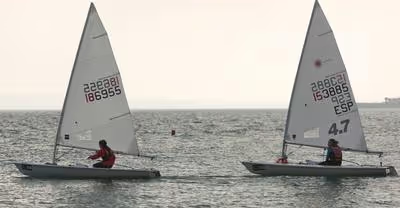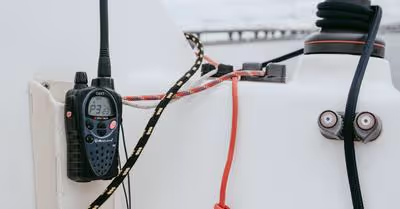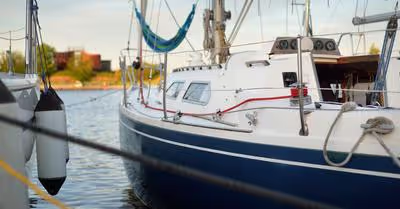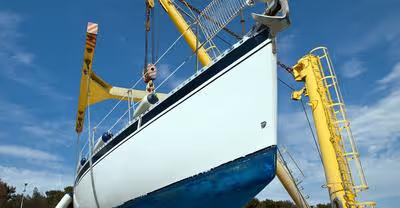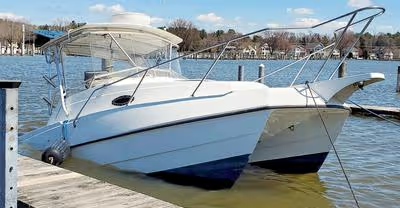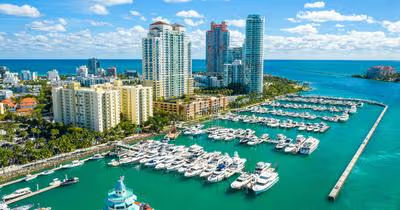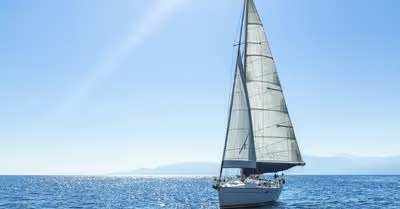Table of Contents
Measuring Wind Speed and Strength
Before we dive into the ideal sailing speed, let’s discuss the ways to measure wind speed and strength. As a sailor, you should know how wind speed and strength are measured so you can stay within an ideal range over waters.
Wind speed is measured in nautical miles per hour, also widely known as “knots.” One knot is just a little longer than one land mile. According to Marine Insight, one nautical mile is defined as:
1 nautical mile = 1 knot = 1.1508 mile on land. Therefore, 1 knot = 1.1508 miles per hour
On the other hand, the strength of wind is measured using the Beaufort Wind Scale. Admiral Francis Beaufort, a British naval officer, invented this scale in the 18th century. The Beaufort Wind Scale ranges from 0-12, 0 being completely calm while 12 being the strongest storm.
Wind Direction and Windward Sailing
As a sailor, you also need to understand the importance of wind direction. As the name suggests, wind direction is essentially the direction from which the wind blows. In other words, it is the point of the compass the wind is blowing. For instance, a south wind blows from the south, not to the south.
Windward sailing is another phenomenon you should be aware of. It simply means sailing into the wind. However, remember that a boat can't move into the wind directly since the sails don’t create any lift. When the term “windward sailing” is used, it always means that the boat will be a little off the wind by at least 40 degrees.
Different Wind Strengths
If you are new to sailing, you might have heard some confusing terms revolving around wind strengths. Let’s take a look at a few of these:
1. Calm Winds
Calm winds are winds that lie between 0 and 1 knot. The water is so still during calm winds that it almost looks like a mirror. On land, this type of wind makes smoke rise vertically. Calm winds are not ideal for sailing because a sailboat might not even move.
2. Light Winds
Light winds range from 1 to 14 knots. They create small wavelets in the water while filling up the sails. On land, you can feel this type of wind on your face. Tree leaves also start to move in light winds.
Light winds can affect your wind speed, but this depends on your boat’s size and the type of water you are sailing on. For instance, if you are sailing on a sailboat on a small lake in your hometown, light wind conditions might be appropriate, but the same sailboat will not be able to handle the waves in a bigger lake or ocean.
3. Moderate Winds
Moderate winds range from 15 to 20 knots. Sailing in moderate winds is the most fun. Moderate winds will keep you highly engaged and will make your sails full. You can sail your boat at full speed. On land, moderate winds are the kind of winds that raise dust in the air and bend small tree branches.
You should always sail with experienced sailors who can handle the conditions perfectly in moderate winds. You may feel uncomfortable the first few times if you have a small sailboat and aren’t used to moderate winds. Truth be told, moderate winds are ideal if you have a large boat. A large boat will sail at maximum hull speed in moderate winds and not pose a danger to you or your crew.
4. Strong Winds
Strong wind speeds range from 20 to 33 knots. If you are sailing in strong winds, you must shorten your sails. Strong winds on land move tree branches, and you can hear the wind whistling by. It is not advisable to sail on a lake during strong winds. This is because the conditions can be unsafe, leading to you grounding your sailboat.
In an ocean, however, only experienced sailors can handle strong winds. If you’re a pro sailor, you probably already know that strong winds are ideal for offshore sailing. Ensure that you use an offshore sailboat designed to help you deal with such winds. For example, your boat should have an easy reefing system that enables you to reef the boat easily.
5. Gale Winds
Gale winds range from 34 to 47 knots. These winds form foams on the surface of the water in well-marked streaks. All boats head towards the water during gale winds. On land, these winds break small branches and make walking difficult. Gale winds are not ideal for smaller sailboats or beginners still learning how to sail. In contrast, you can handle these wind conditions perfectly if you have prior experience and a larger ocean sailboat.
6. Storms or Squall Winds
Storms or squall winds range above 48 knots. These are quite dangerous and can cause waves in the water to go over eight meters. Storms are not ideal for sailing, and you should stay at home if possible. However, if you are already out at sea and the tides change, you should have the necessary skills to help you ride out the storm safely.
So, What Is the Ideal Wind Speed for Sailing?
As discussed earlier, the optimum sailing speed differs from one sailor to another. Generally speaking, it should allow you to steer and guide the sailboat safely and within your comfort zone, but since we all have different comfort zones, let’s discuss three types of winds speeds you should know about:
Easiest Wind Speed
The wind is the main driving force when it comes to sailing. However, there is a thin line between what’s easy and dangerous. Many beginners think that sailing in light winds is ideal. This is not always true because light winds might not even fill up your sail. They might leave you in drag and make sailing difficult.
Therefore, the best wind speed lies between 7 and 10 knots. This is ideal if you are a beginner and are still learning how to handle a sailboat. At 7 to 10 knots, it is also less risky to capsize.
Ideal Wind Speed for Training
Learning how to sail mainly involves getting to know the sailboat and how to handle it. You should play it safe in most cases so you do not injure yourself or capsize the boat. We always advise young sailors to start at wind speeds of 10 knots or below. Such speeds can allow you to learn how to handle the boat.
However, training to become a skilled sailor is an entirely different thing. If you stay in your comfort zone or in a situation where you can only handle 7 knots, you won’t become a professional. To become a pro, you should try different wind speeds to improve your skills in handling varying sailing situations. After you've learned how to handle the boat and wind speeds ranging from 15 to 20 knots, you should get out of your comfort zone and aim for greater speeds.
Minimum Wind Speed
Sailing in a storm can get impossible but so can trying to sail when the wind is calm or at speeds ranging from 0 to 1 knot. This is because, during calm winds, there is hardly any wind in the sails, so the boat does not move. Therefore, the minimum wind speed for sailing is 5 knots. Anything below 5 knots will waste your precious time, and your boat will not move (unless it's very small, like a sunfish).
This might surprise you but sailing at a minimum wind speed of 5 knots is a skill on its own. Professional sailors who have mastered this skill will tell you not to over-adjust your sails or steer the boat too much in such conditions. Instead, you should hang back the sails and relax. The sails will eventually catch enough wind to get you moving.
Recent Articles



